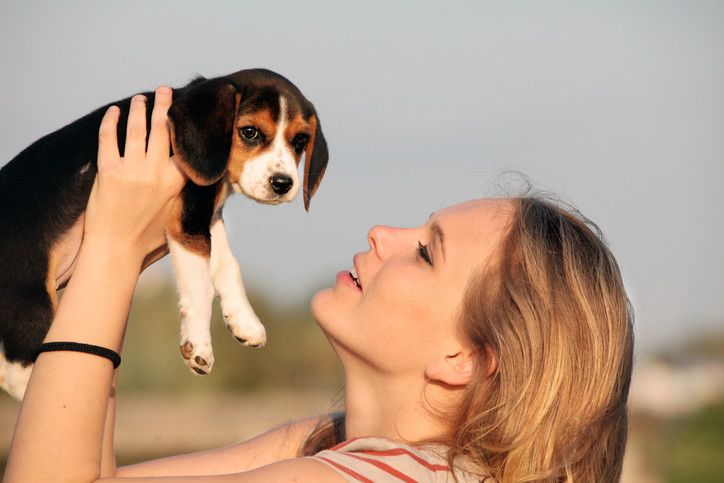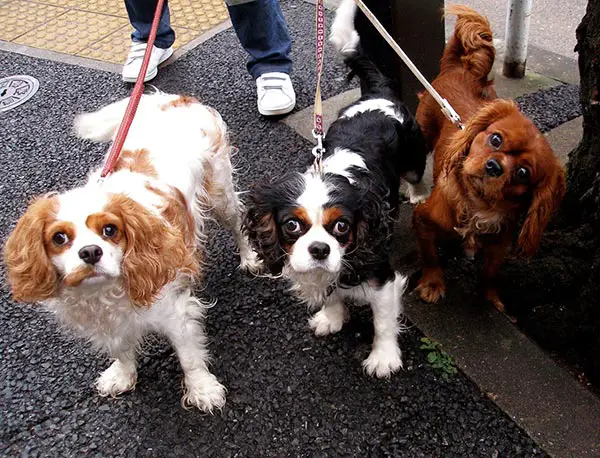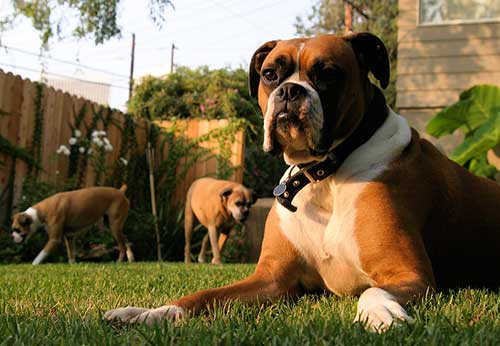Pet therapy is an increasing trend nowadays as people veer away from pharmaceutical situations to look for more alternative and natural cures.
Depression is one of the most silent killers in our North American society today.
More than 80% of people have felt depression at some point in their lives with a certain percentage of that having felt deep depression that requires extra help and support.
Pet therapy has come to have a very special role in the field of health care for its therapeutic value and depression treatment.
Results are astounding when this type of pet therapy is done well.
The most important thing is to actually ensure that you have and know about the best therapy dogs for depression.
This article will go through the silent killer of depression that is sucking the life out of many people in society today (especially in North America). It will then talk about pet therapy and how it helps for treating depression.
Next, the very best therapy dogs for depression will be discussed.
Each of the therapy dog breeds will be broken down to explain how they uniquely and specifically can help with treating depression and for bringing smiles back to faces that deserve to enjoy life.
Table of Contents
About Depression and It’s Impact:
Currently in North America, depression is one of the most common difficulties that people have in modern day life. It is caused by a combination of biological, environmental, genetic, and psychological factors.
Factors that show that someone is depressed include having a low mood for a prolonged amount of time, having anxiety, having distress, feeling unmotivated, and frequency of these feelings.
Overall, the effects of depression can be seriously devastating to the person, to the person’s relationships, and to their loved ones.
According to PetApproves.com depression can also impact on a person’s work life, school studies, and personal connections overall.
The ability to concentrate is also affected so that all areas of life are impacted upon.
The most serious effect of depression is thoughts of suicide or at worst, suicide itself.
Because of these very devastating effects, it has become very important to find the right treatments and therapies for this condition.
One of the greatest ways to ease depression is called pet therapy. In the next section we will continue to discuss the benefits of pet therapy.
About Pet Therapy and How It Helps:
Pet therapy is a well known as well as scientifically proven therapeutic modality for people who are currently suffering from depression.
This interaction with a gentle and sweet caring being has quite a lot of significant health benefits.
The research has shown that pet therapy can have great effects on physical health.
This includes lowering blood pressure, improving cardiovascular fitness, endorphin release, oxytocin release, calming effects on the human body, decreasing and diminishing physical pain, relaxing the nerves and muscles, and increasing physical fitness.
The emotional effects of pet therapy include lifting up one’s spirits, decreasing periods of low moods, decreasing periods of boredom, decreasing anxiety, improving self confidence, improving a feeling of worthiness, improving motivation, improving self esteem, alleviating feelings of isolation and loneliness, and guiding happy feelings.
With all of these health and wellness benefits in relation to depression, it’s no wonder that so many people are now trying this method out for helping to uplift their mood and spirits.
When it comes to choosing the right pet therapy techniques and the right animal for you, however, this becomes highly technical and personalized.
Here are some tips and information about therapy dogs and how to choose the right dog for you.
About Therapy Dogs:
Therapy dogs come in many sizes and shapes. Many of them are very sociable to varying degrees.
If you are highly sociable, you may also want a highly interactive dog, but if you can get overwhelmed easily, and less active dog who is more calm may be better for you.
Some dogs are trained for various settings like hospitals, retirement homes, homes, nursing homes, apartments, schools, libraries, rehabilitation units, and for children.
Securing a therapy dog often requires formal documentation, especially when the dog needs to reside in no-pet housing or accompany their owner to typically pet-restricted areas. This is where obtaining legit online ESA letters becomes crucial, as they serve as a professional acknowledgment of the therapeutic benefit the animal provides. These letters must be issued by a licensed mental health professional and affirm the necessity of the animal for the owner’s emotional support, thus facilitating a smoother process in situations where proof of an emotional support animal is demanded.
When choosing your therapy dog, make sure you choose the breeds that make the best therapy dogs.
One thing that all dogs for therapy should have in common is an even and gentle temperament.
Dogs for therapy should be socially open, friendly, patient, gentle, and confident. These types of dogs are bred especially for the role of being therapeutic to children and adults.
One breed that makes great therapy dogs is the labrador retriever.
The labrador retriever is an incredibly intelligent breed that tends to love humans, be gentle, and follow commands well. This has been a well loved breed for therapy pets for many years. The gentle nature makes it easy to cuddle with them and trust them.
The German Shepherd is also a favourite breed in the pet therapy world.

These dogs tend to be fiercely loyal, as well as very gentle in nature.
They make great therapy dogs for those reasons.
Small beagles are also so super for the role of a therapy dog.

It has floppy ears, is small, and has a black, white, and brown colour scheme.
The dogs are active, but also cuddle up nicely for someone who likes activity and cuddles. They are very sociable and that’s why they are favoured.
Other breeds that make good therapy dogs include the Saint Bernard, the Pomeranian, the the cute faced Pug.
These are known as the best dog breeds for therapy in the small therapy dog range, because of their cute little puppy dog eyes, their smaller body sizes, and their amazing levels of energy for interacting with humans.
These types of breeds have a natural desire to please humans. They also are very intelligent, give tons of love and affection, and are incredibly protective of their human friends/owners.
The best therapy dog breeds for depression specifically, include the: French Bulldog, the King Charles Spaniel, the Pug, the Labrador Retriever, and the Yorkshire Terrier.

The Yorkshire Terrier has a very long history of being a therapy dog. They form very close bonds with their owners, helping them to feel their feelings in the comfort of a companion. They are very loyal, and very cute. They aim to please their owners and uplift their spirits.

The French Bulldog is loving and comforting. It needs tons of companionship and affection so it stays close to their owners. They are easy to take care of, and they are so sweet to pick up and cuddle with.

The King Charles Spaniel is known for its effectiveness in working with its owner against stress, depression, and anxiety.
These dogs are also great with children. Their sweet faces are almost like angels and their puppy dog eyes are irresistible. All your stress will melt away upon just one look.

The Labrador Retriever is larger than other dogs, but they are very protective. They have great moods and these moods can be infectious for their owner.
These dogs are so affectionate and loyal and they are very tuned into when their owner needs love.

Finally, the Pug is one of the most amazing and cute charming little puppies on the planet.
They have adorable cute faces that almost looked squished. They are also bouncy and have lots of energy.
This dog loves to be friendly with its owner and it loves to make you smile under stressful circumstances.
Some recommended best therapy dogs for anxiety include the Boxer, the Great Dane, the Cocker Spaniel, and the Bernese Mountain Dog.
These dogs are mature breeds and they tend to be understanding of their owner, as well as have a happy and uplifting disposition.
Children’s Pet Therapy For Depression
Pet therapy for children dealing with anxiety and depression is also another way to help kids work through their issues and emotions.
Most children really love animals. When there is a child who sees a dog, cat, or other animal, they normally light up with a smile.
Dogs are also especially sensitive to children’s energies if they are just the right breed.
Some dog breeds love to play and run around. This helps the child feel energetic, get some of their playful side out of their system during the day, and interact with another being in an emotionally safe way.
This type of therapy for children has also been proven effective.
Scientific studies show that when children are in hospital and are allowed to play with pets, they show signs of decreased stress and self reported decrease of long term stress as well.
This helps with decreasing overall nervous system distress.
Animals are easy to relate to for children and having the right pet for your child can really help them in numerous ways.
The recommended best therapy dogs for children include the Yorkie therapy dog, the Boxer, the Mastiff, the Old English Sheepdog, the Labrador Retriever, the Dalmatian, and the Golden Retriever.
These therapy dogs are great with kids because of their gentle dispositions, calm temperament, patience, and intelligence.
#1 – The Yorkie has an energetic character that is able to make friend easily with children. They give children a sense of responsibility as well. The Yorkie dog has been touted as a special needs dog for children especially with autism.
Yorkshire terrier dogs can be trained to work with kids from one year old and up.
#2 – The Boxer has also been a great breed for children in therapy.
One of the Boxer’s main strengths in working with children is that this type of dog loves children. It is playful and people oriented. It can be energetic as well as affectionate. Your child will get a lot of exercise and attention while playing with this breed.
#3 – The Mastiff is another breed that is well loved by children in pet therapy programs. This is a bigger dog that bonds so nicely with people. It is a very gentle breed and it is also very protective of its owners.
#4 – The Old English Sheepdog is just so adorable. It is affectionate, loving, kind, and loves people.
This dog is so calm, yet it acts funny and entertaining and helps children to laugh over and over again for hours on end.
#5 – The Labrador Retriever is a well loved dog breed amongst children everywhere.
This type of breed is so bouncy and enjoys playing with her owners. She is protective, yet loves to swim and frolic outside and inside of water areas such as the park, beach, or pool.
This energetic breed allows for hours and hours of play with children, keeping them happy, warm, safe, and content.
It is sure hard for children to stay sad or depressed given the great happy nature of this type of breed.
#6 – The Dalmatian is well known for the movie and the book 101 Dalmations.
These dogs love humans and they love to have fun and play. This is perfect for children who are having a hard time in their lives.
They are also a great addition as a family pet. This breed loves to run alongside children. This breed is also known as a great cuddler and snuggler with their owners.
Dalmatians and horses have similar types of energy and they tend to get along well. This shows that the Dalmatian also has a very gentle nature that is great for working with children.
#7 – The other breed that tends to work well with children is the Golden Retriever.
This dog is very gentle and it loves attention from children. It is active, friendly, and energetic. It is one of the most loved breeds in North America today. They are intelligent, eager to make others happy, and they love to run around for hours playing.
Pet Therapy Dogs For Adoption and The Adoption Process:
If you are interested in learning more about pet therapy dogs for adoption and how to adopt one, here is a list of basic guidelines to follow:
#1 – Note that the adoptions process is a long process. It does not depend on the application submission date. It depends on meeting all of the guidelines as well as having an interviews process and screening process.
#2 – The adoptions process has the ultimate goal of making sure that the pet has a lifetime of love with their new owners. The process is also to ensure goodness of fit between the pet therapy animal and the person that needs the therapy.
The reason why the adoptions process can be longer and more onerous is because special measures are taken to ensure the very best match for both the pet therapy dog and for the child or adult who needs a specific type of pet therapy.
Both the pet and the individual will have their own unique personality characteristics and so it is important to ensure that there is a just right personality match.
#3 – The application for adoption is quite straightforward but it also asks about your personality, your needs, and your lifestyle.
#4 – Next after the application has been reviewed, the representative will typically contact the potential owner and their family for an interview.
#5 – All household members will then have a meet and greet with the pet therapy dog and any other animals in the household will be required to meet the new dog as well to see if they all get along.
#6 – A home safety check is then done to ensure the home is safe for the animal when the pet therapy dog arrives.
#7 – Pending a pass on all of the above areas, an adoption contract is then completed and signed.
#8 – Adoption donations are typically given. This is sometimes tax deductible. The minimum tax deductible is typically around $500.
#9 – All of these pet therapy dogs are typically current in vaccinations and they have also been already sprayed and neutered which means they are all set to bring home.
Overall, there are so many different types of therapy dogs. There are also so many types of dog breeds.
In order to look at a therapy dogs breeds list, you can go to this link: http://www.petguide.com/blog/dog/top-10-therapy-dog-breeds/.
There are also many pet therapy dogs up for adoption. Feel free to do your research and learn about each type of therapy dog in order to determine the best fit for you.
Next, go to the adoption centre and pet store to interact with a few therapy dogs and you will soon know which one is the best therapy dog for you as one of the best therapy dogs for depression.
When you have chosen the pet therapy dog you would like to adopt, go through the adoptions process explained in this article with a pet therapy adoption agency near you.
This is a great way to go for natural care and healing of emotional issues and depression.
It can also bring hours and hours of joy and warmth allowing you to feel alive again. Pet therapy is a sweet type of therapy.
Be sure to consult with your professional, MD, and your health care team if you are suffering from major and serious depression.







